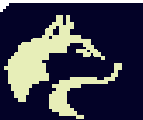Team:Washington/Gram Negative/Design
From 2010.igem.org
(Difference between revisions)
| Line 25: | Line 25: | ||
</html> | </html> | ||
<!---------------------------------------PAGE CONTENT GOES BELOW THIS----------------------------------------> | <!---------------------------------------PAGE CONTENT GOES BELOW THIS----------------------------------------> | ||
| + | The ''Pseudomonas aeruginosa'' genome includes a Type VI Secretion System (T6SS) which has been shown to target prokaryotic cells with a toxin (Hood, 2010). In order to create a probiotic application for this system, we first attempt to express it heterologously in ''E. Coli''. | ||
| + | Using Recombineering as described by Warming et al (2005), we are replacing the strict native regulation with robust T7 promoters to create strong expression of the T6SS. | ||
| + | |||
| + | At the same time, we are creating inducible circuits to allow for production and regulation for the antibacterial toxin and antitoxin system, allowing us to create "assassin cells" upon induction. | ||
<!---------------------------------------PAGE CONTENT GOES ABOVE THIS----------------------------------------> | <!---------------------------------------PAGE CONTENT GOES ABOVE THIS----------------------------------------> | ||
Revision as of 00:52, 9 September 2010
The Pseudomonas aeruginosa genome includes a Type VI Secretion System (T6SS) which has been shown to target prokaryotic cells with a toxin (Hood, 2010). In order to create a probiotic application for this system, we first attempt to express it heterologously in E. Coli.
Using Recombineering as described by Warming et al (2005), we are replacing the strict native regulation with robust T7 promoters to create strong expression of the T6SS.
At the same time, we are creating inducible circuits to allow for production and regulation for the antibacterial toxin and antitoxin system, allowing us to create "assassin cells" upon induction.
 "
"
